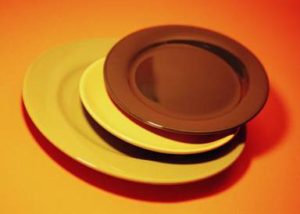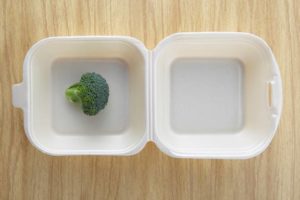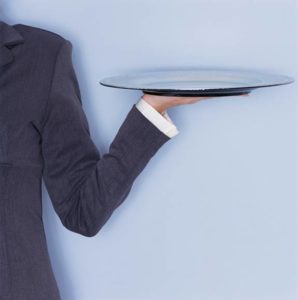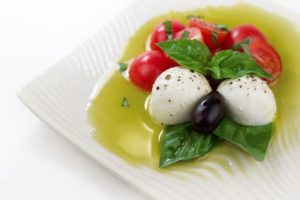The American Plate
Rethinking It Can Change Your Health & Your Life

 by Ronmerk
by RonmerkWhy rethink the plate? Focusing on the plate means focusing on something concrete. Our health is not about abstractions like calories, pyramids, and nutritional labels, but about what is actually on that circular piece of pottery directly under our faces.Whether its paper, porcelain, or in the shape of a Chinese take-out container, the plate is essential to our eating. It holds our food, and in some cases, literally guides us. Through regular, realistic consideration of our plate, we can cut carbs, increase veggie intake, reduce calories, increase nutritional value and prevent and manage disease.
It’s time to think critically about your serving vessel. Actually looking down at the food you are eating can be an education in portion, color, and origin that can lead you down a road lined with nutritional gold. Here are four ways of rethinking, retooling and re-appreciating your plate.

For most of us, a better plate means understanding “portion distortion” traps. For example, to help keep portions in check, WebMD shows us that a serving of mashed potato should be the size of a light bulb and a tablespoon of mayo is the size of a poker chip, and such visual renderings can be a wake up call. That a muffin can be four serving sizes and a large soda can be at least two is something that goes unnoticed with mindless eating and eating on the run. There are plenty of ideas for helping to keep us honest when it comes to portions, like these ideas from MSNBC that include breaking down leftovers, or divvying up purchases of snack foods before the mindless eating hits that can turn bowls bottomless.

Another popular way to achieve potion control is putting the shrink on the crockery itself. Research indicates that smaller dinner plates actually translate into smaller meals without affecting satisfaction. It makes sense—calories saved when your plate goes from 12 to 9 inches can add up over time, and studies show we eat what’s in front of us regardless of our appetite. One portion control tip famously put into practice by the reputedly thin French is leaving food on the plate, something best practiced when dining out. “Cleaning the plate” is an antiquated maxim of misdirected moms, not for the nutritionally conscious that can see when their devotion to moderation is being compromised. Leave it – Mom won’t mind. A few bites can save 100 calories; leaving a quarter of your meal can save 500.
In a supersize world, understanding portions can be an important epiphany, but there are other ways to assess a plate that don’t involve portions. It has to do with the origins of the foods we are eating. What part of your plate has a local origin? What part is farm raised? What is organic and what is processed? How far did it travel and who prepared it? The What’s On Your Plate project addresses some of these critical questions through the eyes of two eleven-year-olds from New York City as they go on a quest to understand what’s on all of our plates.
The Divided Plate
We have the Swedes to thank for introducing us to The Plate Method, a simple eating system that was developed for the treatment and prevention of diabetes and also has weight loss benefits. Another method that focuses on serving sizes, it aims to simplify the eating life for those managing diabetes. By focusing only on sizes and categories of servings, originators of the Plate Method contend that healthy eating will follow.
The method works by dividing a 9-inch plate into sections that can be devoted to non-starch veggies (half), a section devoted to lean meat, fish or chicken (a fourth), and a section for bread, rice and noodles (a fourth). A half bowl of fruit and low-fat or skim milk can be added. Evidence shows it can help diabetes patients, and it can be a helpful, simple tool for those overwhelmed with a new diagnosis and need a plan but find it difficult to do it without help.


According to the American Institute for Cancer Research, the key to healthy eating is all about the plate, not about pyramids. They urge a fresh way of the thinking when it comes to the plate, one termed The New American Plate. The New American Plate is meant to begin an evolution of the old American plate. You know the one – it features an oversize piece of protein and a giant lump of starch with a satellite of tiny veggies. This old plate has been serving up sizes well beyond those recommended by the USDA, and the growing portions are ready for a makeover. By using these guidelines, the AICR maintains that we can lower our cancer risk and manage weight at the same time.
The New American Plate includes guidelines for what percentage is filled by what food, and allows foods that pack the best nutrition punch to take over. It’s all about recognizing and using standard portions, not oversize ones. Meals are made up of 2/3 (or more) vegetables, fruits whole grains or beans, and 1/3 (or less) is made up of animal protein. Learn more about the New American Plate, at the AICR website.
The Colorful Plate
We know one of the tenets of nutrition is to put a rainbow on your plate. It seems that when it comes to a fashionable dinner plate, not-beige is the new black. Are the foods on your plate assuming a palette of beige and brown? That’s the color of meat and potatoes, and it could indicate your plate is out of style.

Just in time to help you start thinking about plate aesthetics, March is National Nutrition Month®. The theme this year is “Eat Right With Color”, and it’s meant to spread the word about naturally occurring colors in fruits and veggies that are packed with nutrition. The goal is to be mindful of what is on your plate for every meal of the day, and challenge yourself to brighten it up. You know the color run-down if you read this blog: blue foods are colored by natural plant pigments called anthocyanins; leafy greens have beneficial lutein, folate and vitamin B; orange and yellow foods contain beta-carotene; and reds – consider the nutritious tomato – are full of valuable lycopene. The broader your rainbow, the more nutrition and disease prevention you are putting in your body. Find out more about Eat Right with Color.
Time to improve your plate quotient? Whether you prefer a portion makeover to being origin conscious or you’re leaning toward a color overhaul, knowing your plate means coming to grips with what you choose to fill your nutritional tank. Being conscious of your crockery is the first step to rethinking your personal plate in a way that will last you a long, healthy lifetime.

